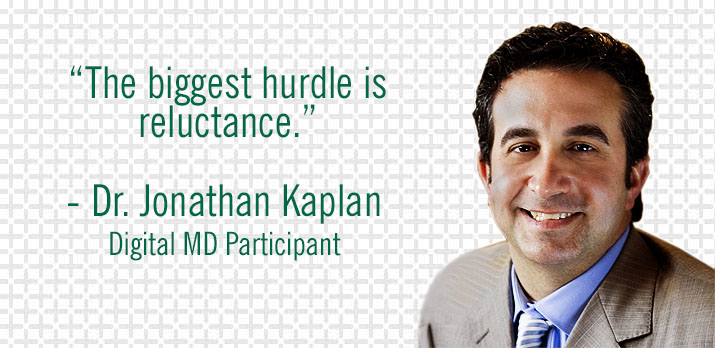With the U.S. government pushing for more streamlined management and digital sharing of patient medical records, electronic medical records (EMR) have become a focal point of the healthcare industry. One of the challenges of changing the way healthcare providers collect, store, manage and maintain confidentiality of patient records is the need for individual providers to find the right system at the right price.
Dr. Jonathan Kaplan, a board-certified plastic surgeon at Pacific Heights Plastic Surgery in San Francisco, has championed the electronic push, which is quickly replacing the more traditional paper-record system. In addition to his practice, Kaplan created the website and digital app BuildMyBod.com, designed to assist patients with finding the right plastic surgeon, reviewing different procedures and getting a cost estimate.
“There’s no alternative,” he said in an email interview. “The right EMR … can potentially be safer and easier to access records and more secure than a bunch of paper charts,” adding that it “doesn’t have to be expensive.”
“The biggest hurdle is reluctance,” Kaplan said. “The doctor or facility has to get (past) all of the reasons (fear, expense) not to do it.”
“The risk of not doing it is scarier and more expensive than leaving records unsecured in paper form,” Kaplan said.
Digitizing records, he said, not only helps patients but providers as well, by allowing doctors to access records whether at home or in the office.
“I have access to my records on any computer or device after securely signing in,” he said. “I’m not ‘flying blind’ when away from my office.”
Meeting the Challenges of Healthcare in the 21st Century
Government-mandated deadlines for providers across the country have generated anxiety in some healthcare circles, with many states lagging behind and facing possible penalties for the delay in importing all records to electronic form.
Kaplan believes the digital age will soon encompass all family medical practices as they are slowly absorbed by larger medical groups. At that point, the choice to pick a specific EMR system will be gone. The time to act is now.
“In the future, I see 100% of family medical practices being owned by a hospital or hospital system,” he said. “At that point, the hospital or hospital system will impose an EMR on you that you neither like [nor] find user-friendly.”
Finding the Right EMR
There are differences between EMR systems that providers need to understand, he said. Kaplan believes some “big-box EMRs” try to do too much, complicating the process of digital collection and storage.
Those companies, he said, “in an attempt to satisfy everyone’s needs, satisfy no one’s needs and introduce many unnecessary clicks and screens to accomplish any task.”
Kaplan clarified that he doesn’t mean the systems offered by big-box EMRs are not good. They just don’t apply to every type of healthcare provider or every size of provider facility.
“Just to be clear, these EMRs definitely have their advantages when it comes to sharing information across providers and are great in terms of accessibility of information,” he said. “But when applied to all fields of medicine (general surgery, internal medicine, plastic surgery, radiation oncology), there really isn’t a one-size-fits-all solution.”
He believes that specialty EMR companies such as NexTech can provide a more streamlined solution for certain practices.
“A large health system can’t buy different EMRs for implementation across their system to satisfy varying doctors,” he said. “That’s why a hospital or health system forces a big box EMR on everyone for consistency and practicality, regardless of applicability.”
USF Health Helps
USF Health Morsani College of Medicine at the University of South Florida is addressing this issue by providing resources to assist healthcare providers with understanding the common concerns and barriers to implementing a successful EMR system.
Providers, according to the college’s website, need to consider five key issues: usability, technical ability, privacy, cost and patients.
EMR systems can vary as to how user-friendly they are, meaning providers and staff might have to spend more time learning the new system. Likewise, most medical staffs are diverse in both age and skill-level of employees. Less computer-savvy users may be intimidated by a new system. Patient privacy is a chief concern in picking the right system that can respond appropriately to potential breaches and technical malfunctions. Also, any new system comes with a cost, which can dissuade some providers due to budgetary and other issues.
USF Health’s Morsani College of Medicine recommends having a strategic plan that includes a detailed timeline for implementation, as well as built-in processes to ensure communication between users and adequate training. Providers should understand how much they can spend, and work to budget and eliminate unnecessary or hidden costs.
By taking a few small steps in advance, the hurdles to a successful rollout of a new EMR system can be diminished, allowing for a quicker turnaround time in reaching the goal of improved patient care.
EMRs are one part of the digital revolution that is health informatics. Earning a degree or certificate 100% online from USF Health’s Morsani College of Medicine can provide you with the skills needed to stay on the cutting edge of Health IT. Learn more at /programs/.



